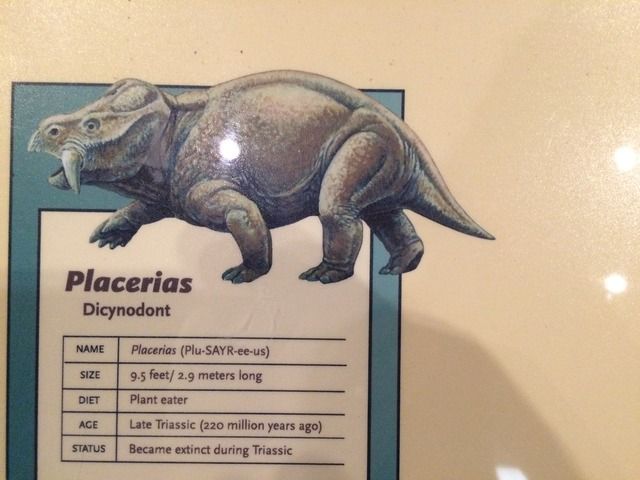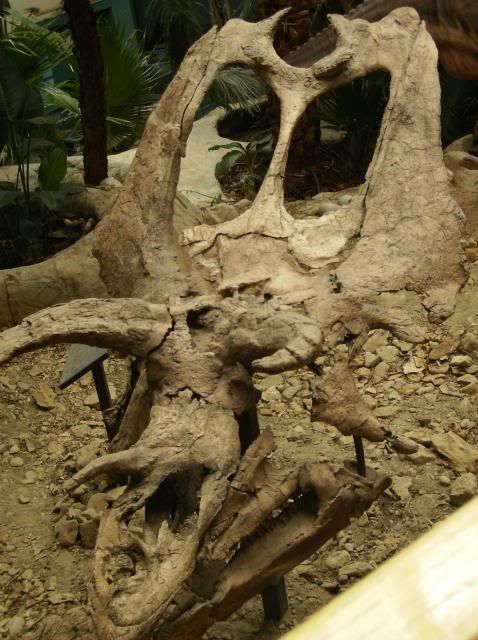Last month’s challenge was a stumper. For most of the month, only one person dared to give a guess. Nevertheless, it was not until days before the month ended that Isotelus came in with the correct answer.
The Dicynodont Placerias hesternus
This critter is indeed Placerias hesternus.

(Taken at the New Mexico Museum of Natural History and Science)
Placerias lived during the late Triassic 221 to 210 million years ago. Placerias would have reached a length of ~3.5 meters and weighed in at nearly 1000 kilograms, making it one of the largest herbivores known about during this time. It was also one of the most common animals around during the late Triassic. Placerias had a beak and two tusks, which are common traits for dicynodonts. Both males and females had the same size tusks, thus they would have most likely used them in obtaining food and defense; not necessarily in finding mates. It is thought that Placerias would have had a life style similar to modern hippopotamuses, wallowing in semi-shallow rivers and lakes and spending little time outside of water.

(Taken at the New Mexico Museum of Natural History and Science)
Even though Placerias lived during the “Age of Dinosaurs” (the Mesozoic), it was not a dinosaur, it is a synapsid. Along with being a synapsid, it is also a therapsid, meaning it is very closely related to modern mammals, but falls outside of the modern mammal clade. Fossil animals, such as Placerias, are found across the world and were key evidence to help establish that at one time in earth’s past, all the continents were of one land mass (Pangaea). Dicynodonts are the second most successful synapsid clade and are only surpassed by mammals in their diversity and longevity.
Moving on to next month’s challenge:

(Taken at the New Mexico Museum of Natural History and Science)
Since last month’s was so difficult, I am hoping this one is much easier.